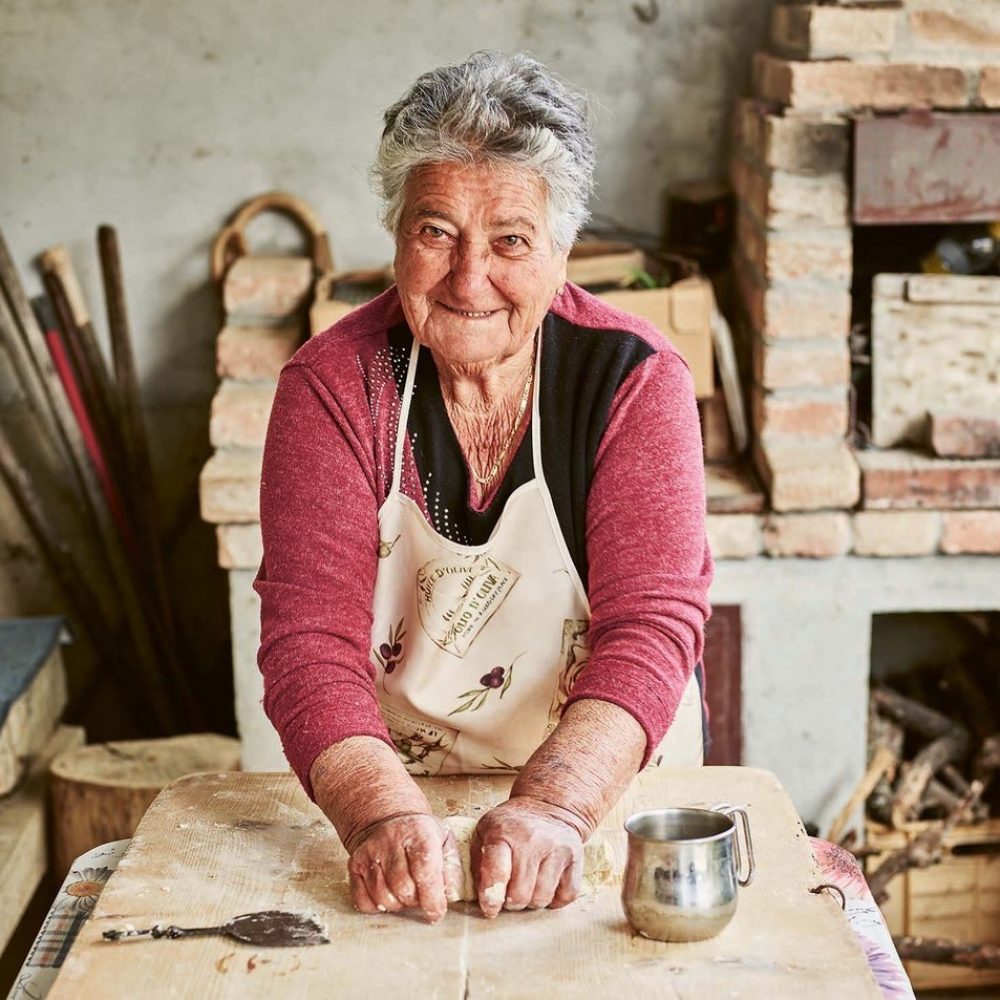You may be familiar with such pastas as spaghetti, ravioli, tagliatelle and even agnolotti, but with more than 350 different noodle shapes across Italy, we’d be impressed if you’ve seen them all.
On this week’s episode of Milk Street Radio, Vicky Bennison takes us behind the scenes of her YouTube channel Pasta Grannies, which brings viewers into the kitchens of Italy’s pasta-making masters. From twisted hoop earring-shaped lorighitta to wood-stamped corzetti and pì fasacc’, a dumpling-shaped pasta that resembles a baby’s diaper, we discover some of Italy’s more obscure noodles. Get an extended look at our interview—and test your pasta shape knowledge—from the excerpts below and listen to the full conversation with Christopher Kimball here. Plus, find a recipe for pici from the cookbook, “Pasta Grannies: The Secrets of Italy's Best Home Cooks,” and channel your inner nonna.
Lorighitta
Lorighitta looks like twisted hoop earrings. They're only found in the town of Lotzorai, southwest of Sardinia. Cesaria is now 95 and still makes them on a daily basis. The trick is to get your strand of pasta very thin so you’ll have fine, delicate lorighitta.
Watch 95-year-old Cesaria making Lorighitta with chicken:
Pì Fasacc’ Ravioli
Pì Fasacc’is a dumpling-type pasta from the small village of Artogne in Lombardy near Lake Iseo. The name literally means “swaddled babies” in the local dialect for the motion used to wrap the pasta, which has an annual festival dedicated to it.
Watch Anna and Elena make Pì Fasacc’ Ravioli with browned butter and sage:
Corzetti
Ligurian corzetti is a coin-shaped pasta made using carved, cookie-cutter-like wooden stamps. Traditionally, each stamp embossed two different designs onto each side of the “coin.” Historically, corzetti were printed with nobility's coat of arms as a way of showing off and demonstrating status. The pasta can't be rolled too thin or, when pressed, the patterns will cancel each other out.
Watch Alessandra making Corzetti with marjoram dressing:
Pici
Think of pici as a beginner's pasta. They’re hand-rolled spaghetti from Tuscany, and 93-year-old Peppa helped to popularize this pasta by organizing a food festival to celebrate them at a time when cucina povera, or “peasant cooking,” wasn't esteemed.
Watch Guiseppina make pici with garlic tomato sauce and get the recipe below:
Recipe from “Pasta Grannies: The Secrets of Italy's Best Home Cooks” by Vicky Bennison:
For 4 People
For the pasta
400 grams (14 ounces/3 1/3 cups) 00 flour or plain (all-purpose) flour
pinch of salt
1 egg
about 165 milliliter (5 ½ fluid ounces/ 2/3 cup) water
semolina flour, to roll the pici in
For the garlic sauce
4 tablespoons extra-virgin olive oil
5 garlic cloves, ones that have not developed their ‘anima’ or green shoots
Fresh red chili peppers, to taste (Giuseppina used one, sliced into three)
2 tablespoons tomato purée
400 grams (14 ounces) plum tomatoes, preferably San Marzano
Salt
The sauce has to simmer for a couple of hours, so start this before your pasta. Pour the olive oil into a small saucepan – it should cover the base to a depth of 5 millimeters ( ¼ inch). Warm up the oil over a low heat and sauté the whole garlic cloves until you can crush them with a spoon; they shouldn’t burn. This will take about 20 minutes. About 15 minutes into the cooking, add the chili pepper, and continue frying the two ingredients for the final 5 minutes. Stir through the tomato purée, followed by the plum tomatoes. Break up the tomatoes with a wooden spoon, season with salt, and add half a tin of water. Let this simmer very gently over a low heat for 2 hours, adding a splash of water from time to time if you need to. You want a thick sauce at the end. Giuseppina uses a food mill to purée the sauce – to make sure the garlic and chili disappear. You could also use a hand-held blender.
Make the pasta dough as described here but swap 3 of the eggs for water. Fill a shallow bowl with semolina flour to drop your pici into, to stop them from sticking together. Place a small bowl of water to the side of your pasta board, so you can keep your fingers moist while rolling the dough into pici (or use a small spritzing bottle filled with water).
Roll the dough out quite thickly, about 5 millimeters ( ¼ inch). Then slice it up, making 1 x 12 centimeter (½ x 5 inch) batons. Take each one, place it on the board and place both your hands together over the pasta. Keep your fingers straight and roll out the pasta, moving your hands apart. You are creating a spaghetti strand, so try and keep the pasta even in thickness. Giuseppina’s pici are much slimmer than some of the tubby versions you see on the Internet; aim for about 3 millimeters in diameter and 40 centimeters (15 ¾ inches) long.
Drop your finished pici into the semolina. If the bowl starts getting a little crowded, move them onto a tray.
Bring a large pan of salted water to the boil and drop the pici in. Cook for 2 minutes and then test for doneness. Drain and stir through the sauce – you want it to cling to the pasta and not puddle around it. Serve immediately. Traditionally, no cheese is added.
Recipe excerpted with permission from “Pasta Grannies” by Vicky Bennison, published by Hardie Grant Books.
Quotes have been edited for clarity.
Join the conversation on Facebook, Twitter, Instagram and Pinterest.
Stay up to date on free recipes, new radio episodes, classes, events and more with our newsletter. Sign up here.



